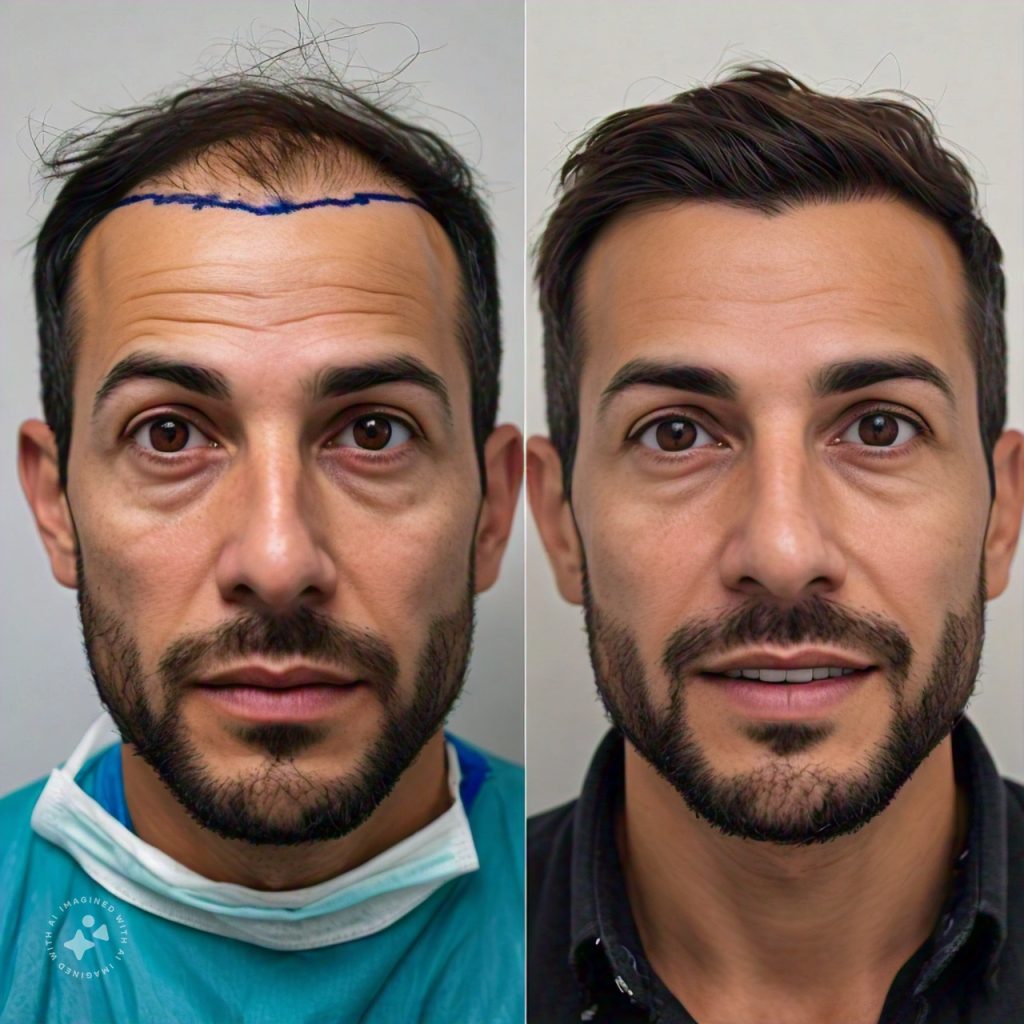Hair Transplant procedures have come a long way over the years, with advancements in technology and techniques ensuring results that are almost indistinguishable from natural hair. However, achieving a natural-looking hair transplant isn’t just about the procedure itself—it involves a combination of factors, from the surgeon’s skill to post-transplant care. Let’s dive into what makes a hair transplant look natural.

1. The Skill and Experience of the Surgeon
The expertise of the surgeon is arguably the most critical factor. A skilled hair transplant surgeon has an in-depth understanding of hair growth patterns, facial structure, and scalp anatomy. They use this knowledge to create a personalized hairline and ensure grafts are placed in a way that mimics natural hair growth. Look for board-certified surgeons with extensive experience in performing hair transplants.
2. Proper Hairline Design
A natural-looking hairline is not uniform or straight; it has subtle irregularities and variations. Surgeons must take into account factors like the patient’s age, facial shape, and existing hair density. A hairline that is too low or unnaturally dense can make the transplant appear artificial. A gradual, soft transition from the forehead to the thicker regions is key.
3. Choosing the Right Transplant Technique
There are two main hair transplant techniques: Follicular Unit Extraction (FUE) and Follicular Unit Transplantation (FUT). FUE involves extracting individual hair follicles, which allows for precise placement and minimal scarring. FUT, on the other hand, involves removing a strip of scalp and is best for those needing larger graft quantities. Both techniques can produce natural results if performed correctly, but FUE is often preferred for its ability to replicate natural growth patterns more subtly.
4. Graft Placement and Direction
For a hair transplant to look natural, the angle, direction, and density of the transplanted hairs must align with the surrounding hair. Each graft must be carefully placed to replicate how hair naturally grows in that specific area. Poorly angled grafts or clumping of follicles can result in an unnatural appearance.
5. Density and Coverage
Natural hair doesn’t grow uniformly; some areas are denser than others. Surgeons aim to replicate this natural variation by transplanting more follicles in areas where the hair naturally appears thicker. This ensures a balanced, realistic look.
6. Donor Hair Quality
The quality and quantity of hair in the donor area (typically the back or sides of the scalp) play a significant role. The donor hair should closely match the texture, color, and thickness of the surrounding hair in the transplant area. If the donor hair doesn’t blend seamlessly, the results may appear unnatural.
7. Minimizing Scarring
Modern techniques like FUE have significantly reduced scarring. Small, precise incisions are made, leaving tiny, almost invisible scars. Patients with short hairstyles especially benefit from this, as scarring can compromise the natural look of a transplant.
8. Post-Transplant Care
Even the most expertly performed transplant can fail to look natural if proper post-operative care isn’t followed. Patients must adhere to their surgeon’s recommendations regarding washing, avoiding direct sunlight, and managing any swelling. Following these instructions ensures the grafts heal properly and integrate seamlessly with the natural hair.
9. Patience with Results
It’s essential to understand that hair transplant results take time. The transplanted hair often falls out within a few weeks after the procedure—a normal part of the process called “shock loss.” New hair growth begins after a few months and continues to improve over 12-18 months. Being patient and trusting the process is vital for achieving the best outcome.
10. Choosing the Right Clinic
Finally, the clinic’s reputation, equipment, and patient care standards contribute significantly to the final result. Clinics that use outdated techniques or prioritize quantity over quality are unlikely to deliver natural results. Always do thorough research and read reviews before choosing a provider.
Conclusion
A natural-looking hair transplant is a combination of artistry, science, and patient commitment. From the surgeon’s skill to the patient’s adherence to aftercare, every step plays a role in ensuring the results are indistinguishable from natural hair. With advancements in techniques and technology, achieving a flawless hair transplant is more attainable than ever. For anyone considering the procedure, investing in a skilled surgeon and reputable clinic is the first step toward a confident, natural-looking outcome.
We are located in Brighton and Hove, proudly serves the nearby areas. Capital Hair Restoration – Hair Transplant is a leading provider of surgical and non-surgical hair loss solutions for men and women throughout Brighton, the UK, and Ireland. Browse our site ( Brighton Hair Transplant ) or call us ( 020 8088 2393 ) for a chat.

